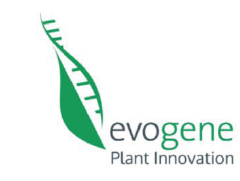
In FutureAgriculture, Evogene is responsible for the pathway implementation in higher plants and phenotype characterization. First, they have selected the best sequences to implement the new pathways in vivo based on the results obtained by the other FutureAgriculture partners in silico and in vitro.
Then, in order to insert the necessary components into plants, Evogene takes advantage of the pathogenic machinery of Agrobacterium tumefaciens (A. tumefaciens). In nature, A. tumefaciens is a bacterium responsible for the crown gall disease in many dicot plants: a small segment of its plasmid DNA moves from the bacterium cell into the plant genome and causes the disease. Scientists have succeeded in deactivating the pathogenic machinery and use it to insert desired DNA pieces into dicot plants instead, and later into monocot plants too. The sophisticated machinery of A. tumefaciens is the basis of many scientific studies carried out today in plants as well as of Evogene’s ability at FutureAgriculture to transfer the new metabolic pathway genes into the model plants.
The long-standing experience of Evogene with plant transformation has allowed them to precisely calibrate many parameters, thus mitigating potential difficulties. In the case of B. distachyon, Evogene has even developed unique proprietary transformation protocols for high throughput gene screening.
Nevertheless, some unexpected challenges can still occur during the process. Sometimes even if the gene is correctly transferred into the plant and enters its genome, it doesn’t get expressed, meaning that the plant has silenced it for some unknown reasons. Other difficulties are related to low transformation rates, but internal know-how helps to solve them.
Even if no obstacles arise during the process, it still takes several months from the initial transformation to the first results on the pathway performance in planta. The process takes more time in B. distachyon (up to one year), comparing to A. thaliana (up to six months), due to the transformation method.






